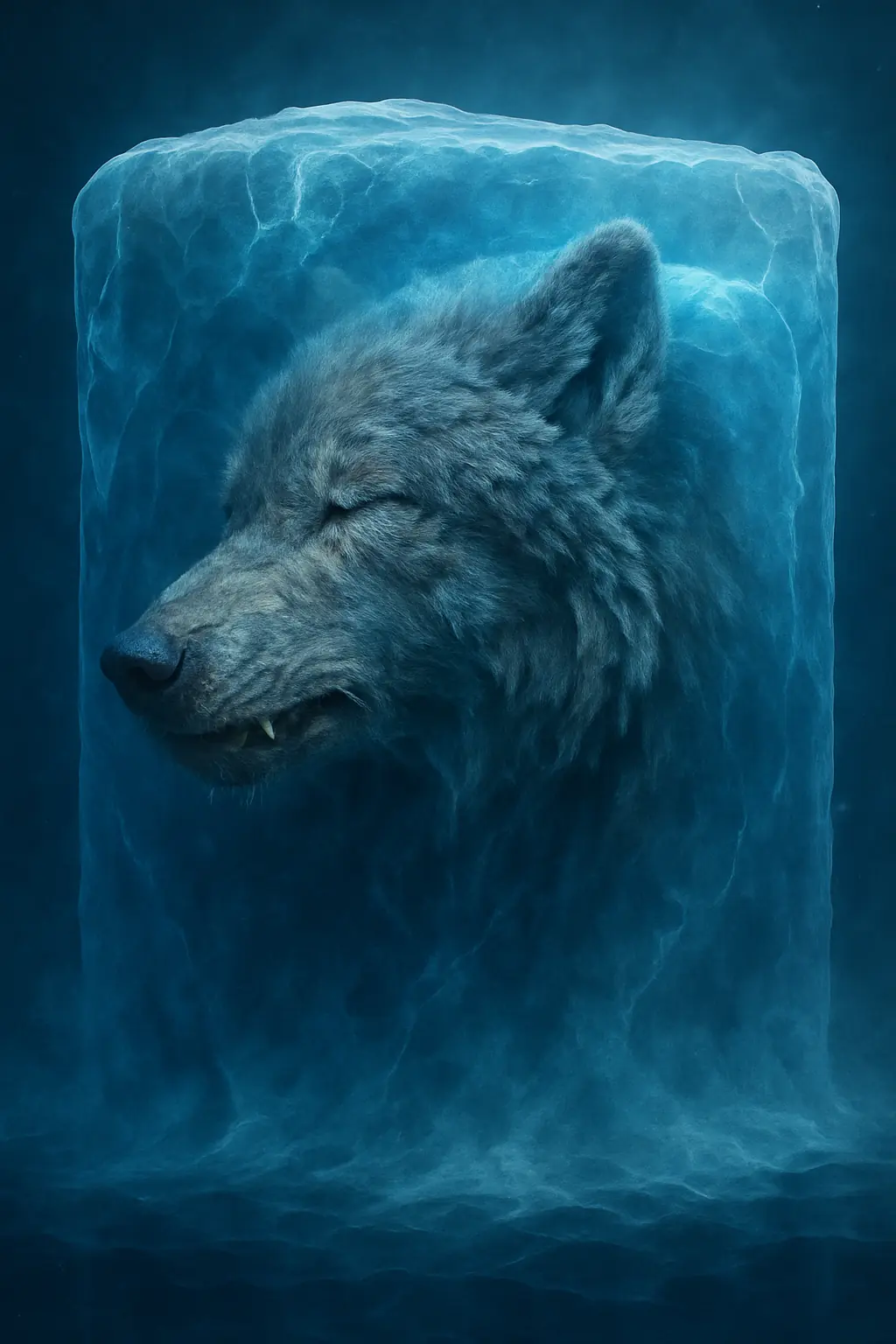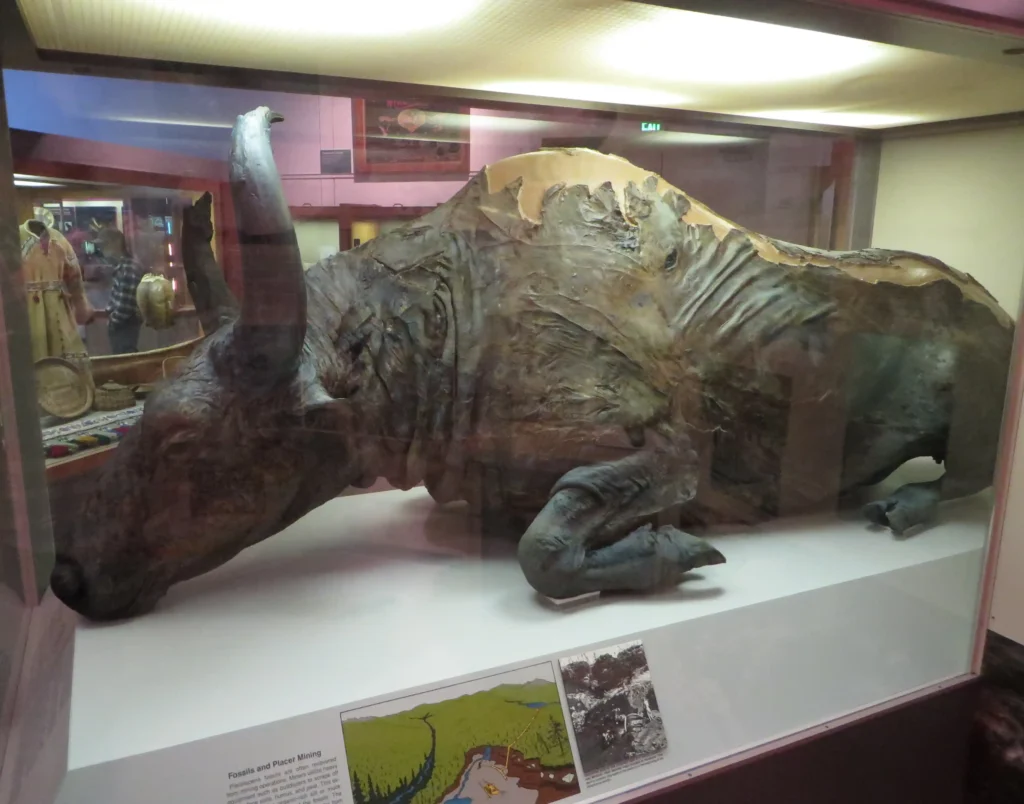
Incredible Ice Age Discoveries: Prehistoric Animals Preserved in Near-Perfect Condition Part 2
Prehistoric animals from the Ice Age continue to amaze scientists especially when they are found frozen in near-perfect condition. In Part 1, we explored the most incredible discoveries, including mummified mammoths, cave lion cubs, and an ancient foal preserved for over 40,000 years.
In this second part, we reveal even more spectacular finds: a frozen wolf’s head with intact brain tissue, steppe bison preserved with muscles and organs, and the first fully intact cave bear ever discovered. These prehistoric animals offer a rare glimpse into life during the Ice Age, and bring us closer to understanding extinct species and their ancient ecosystems.
1. Ice Age Wolf Head
In 2018, local ivory hunters in the Siberian permafrost discovered a nearly perfectly preserved head of an Ice Age wolf. The find occurred along the bank of one of the tributaries of the Indigirka River in Yakutia, Russia. Measuring about 40 centimeters in length, the head belonged to an adult wolf that lived more than 40,000 years ago. This is the first known discovery of an adult Pleistocene wolf head with a preserved brain, providing a unique opportunity to study wolf evolution and compare ancient and modern species.
Summary:
- Discovery date: 2018
- Location: Indigirka River tributary, Yakutia, Siberia (Russia)
- Discovered by: Local ivory hunters
- Wolf’s age: Adult, approximately 2–4 years old
- Estimated death: Over 40,000 years ago
Interesting facts:
- The head was nearly intact including skin, fur, teeth, and brain tissue.
- The head was about 50% larger than that of modern gray wolves.
- Swedish Museum of Natural History researchers plan to extract and analyze DNA.
- The find helps trace evolutionary traits in ancient vs. modern wolves.
2. Steppe Bison: Yukagir Specimen
In 2011, Russian scientists discovered a remarkably preserved body of a steppe bison (Bison priscus) in the Yukagir region of Siberia. This Ice Age species was the ancestor of modern American bison and one of the key herbivores of the Pleistocene epoch.
The animal’s body was nearly completely intact including skin, fur, muscles, stomach, and other internal organs. A full necropsy was performed, revealing valuable details about the animal’s health, diet, and lifestyle. The individual was estimated to be 4 to 6 years old at the time of death. The discovery provided insights into migration patterns and ecological adaptations of prehistoric bison during abrupt climate changes at the end of the Ice Age.
Summary:
- Discovery date: 2011
- Location: Yukagir, Siberia (Russia)
- Discovered by: Russian researchers during a scientific expedition
- Age at death: 4–6 years
- Estimated death: About 9,000 years ago
Interesting facts:
- Nearly the entire body was preserved including fur, skin, muscles, and organs.
- Belonged to the extinct steppe bison species (Bison priscus).
- Helped reconstruct the anatomy and migration patterns of Ice Age bison.
- A valuable specimen for ecological and evolutionary research.
Young Steppe Bison from Verkhoyansk
Another exceptional find came in 2022 in the Verkhoyansk region of Siberia. This time, it was a young steppe bison estimated to be between 1.5 and 2 years old. The animal’s body was in excellent condition with preserved skin, fur, horns, muscles, and even the digestive tract.
This discovery drew attention from both paleontologists and genetic researchers. Scientists are conducting detailed studies of its DNA and tissues, considering the possibility of cloning similar to discussions surrounding mammoth revival. Tissue analysis could allow for the creation of a hybrid descendant using today’s American bison.
Summary:
- Discovery date: 2022
- Location: Verkhoyansk, Yakutia, Siberia (Russia)
- Discovered by: Researchers from the North-Eastern Federal University
- Age at death: 1.5–2 years
- Estimated death: 8,000–10,000 years ago
Interesting facts:
- Exceptionally preserved body — ideal for DNA extraction.
- One of the most intact juvenile steppe bison ever found.
- Potential use in future cloning experiments.
- Provides insights into Ice Age bison biology and genetic legacy.

3. Cave Bear from Bolshoy Lyakhovsky Island
In September 2020, reindeer herders discovered an almost perfectly preserved body of an Ice Age cave bear (Ursus spelaeus) on Bolshoy Lyakhovsky Island — part of the New Siberian Islands in the Russian Arctic. This species lived throughout Europe and Asia during the Ice Age and went extinct about 15,000 years ago. The discovery is significant because it’s the first time a cave bear has been found with preserved soft tissues — including skin, fur, nose, teeth, claws, and even nasal cartilage.
Researchers from the North-Eastern Federal University in Yakutsk described it as a groundbreaking find that opens the door to detailed anatomical, DNA, and evolutionary studies. Previously, only bones or skull fragments of cave bears had been found — making this a major breakthrough.
Summary:
- Discovery date: September 2020
- Location: Bolshoy Lyakhovsky Island, Russian Arctic
- Discovered by: Local reindeer herders
- Species: Cave bear (Ursus spelaeus)
- Estimated death: Between 22,000 and 39,500 years ago
Interesting facts:
- First fully preserved cave bear with soft tissue.
- Body included nasal cartilage, fat tissue, teeth, claws, and skin.
- Research is ongoing in collaboration with Japanese scientists.
- One of the largest known Ice Age predators — a key specimen for evolutionary research.
Although the discoveries from the Siberian permafrost have yielded incredibly well-preserved animal remains — with skin, fur, and even internal organs — the scientific dream of cloning prehistoric creatures remains out of reach for now. The problem is that even when fragments of DNA can be extracted from these bodies, the genetic material is often degraded or incomplete. In order to successfully clone an animal, scientists need an intact cell nucleus containing the full genome — something they have not yet been able to recover from any frozen specimen.
Instead, researchers are shifting their focus to genetic engineering — transferring selected genes from extinct species (such as the mammoth) into the genomes of living relatives (such as the Asian elephant), in an attempt to create a “living hybrid” with similar traits.
Beyond frozen remains, there are also countless other prehistoric fossils — such as saber-toothed tigers, cave hyenas, or species of giant deer. However, these don’t contain any preserved soft tissue or viable DNA, so they are mainly used for reconstructing appearance, behavior, and ecology of extinct animals, not for genetic revival.
Nevertheless, every new discovery pulled from the ice — whether it’s a mammoth, bison, lion, or bear — brings scientists one step closer to understanding the prehistoric world. And perhaps, one day, even to reviving it.






